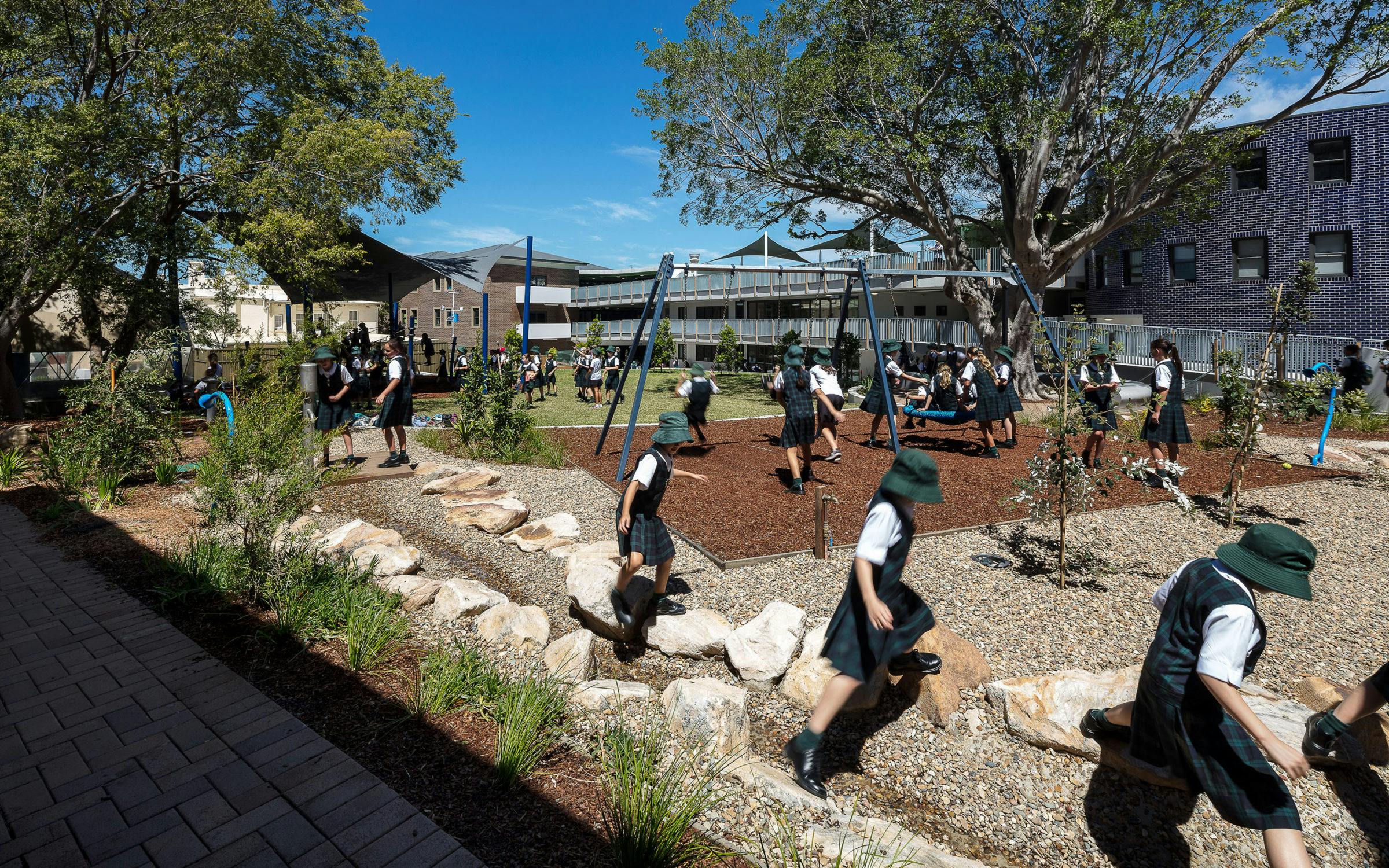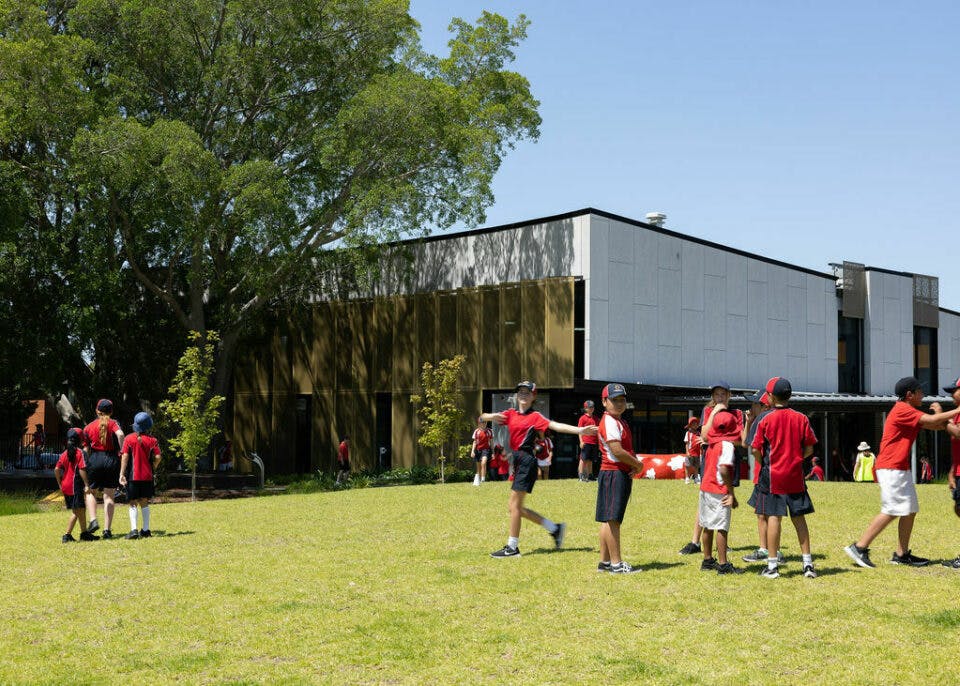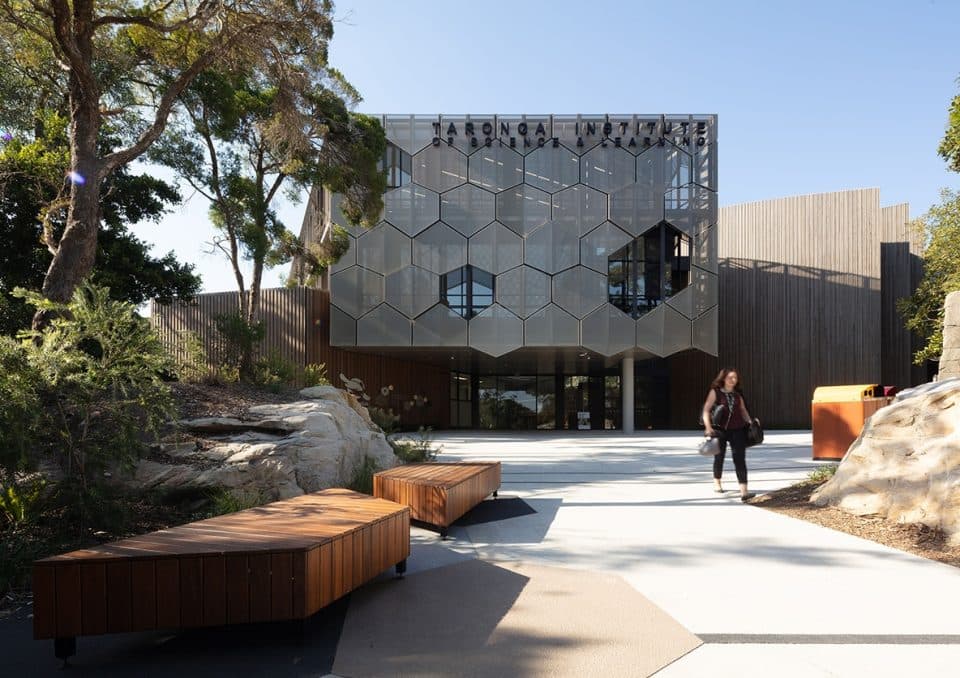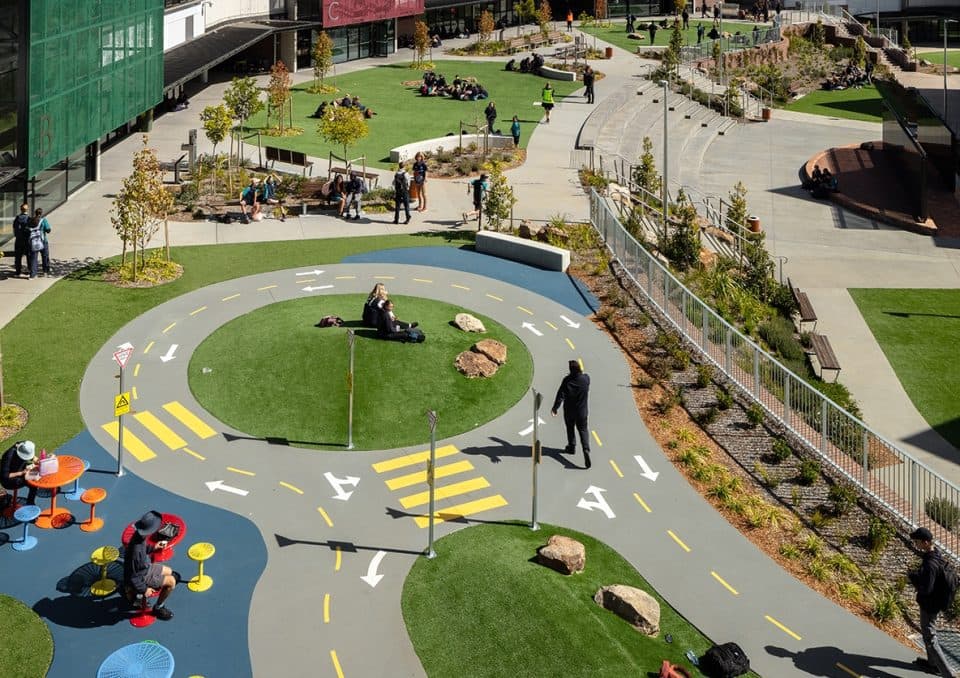Intertwining Traditional Play and Immersive Learning

Play is an integral part of a child’s development, helping to build essential knowledge and skills. An important aspect of play is a child’s agency and ability to take ownership of their experiences. In doing so children can make sense of the world around them, expanding on their understanding of their experiences.
Outdoor play provides an exciting way for children to learn new information and skills. It also encourages children to think of learning as an ongoing process instead of something done in a formal classroom setting. By incorporating educational facilities into outdoor spaces, children’s creativity, health, social skills and sense of independence are enhanced.
PLC Sydney is an example of a School taking an innovative approach to immersive outdoor learning. The outdoor spaces forming part of PLC’s Junior School were designed in collaboration with the NBRS Landscape Architecture Studio and are an extension of the classroom. The project vision was to create environments that inspire students to become involved in STEM, conservation and the projection of our natural environment.
Featuring a turtle pond, insectarium, native bee “hotel”, vegetable gardens, and electronic weather station, the new landscape provides a space for students to develop their interest in STEM fields in an engaging way. Through integrating these elements into a space that is designed to promote active play, the School’s grounds intertwine traditional play and learning.
The turtle pond design features multiple glass viewing panels for observation of underwater creatures, giving an above and below water view (one is also positioned inside the classroom).
The invertebrate enclosure allows an immersive experience as students enter the climate-controlled dome structure to experience insects. Here children can observe under instruction from a Zookeeper and learn about the breeding process that occurs in an adjoining hatchery building.
Through having these immersive spaces students can explore nature and become more exposed to real world science in an unintimidating way. Introducing the unfamiliar to the familiar gives young students the perfect avenue to explore new ways of thinking. The resulting designs are imaginative, playful and intriguing.

Canterbury South Public School

Taronga Institute of Science and Learning
